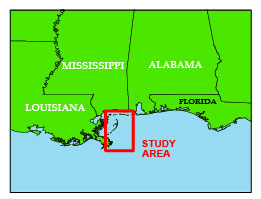| Description |
In April and July of 1981, the U.S. Geological Survey (USGS) conducted geophysical surveys to investigate the shallow geologic framework of the Alabama-Mississippi-Louisiana Shelf in the northern Gulf of Mexico. Work was conducted onboard the Texas A&M University R/V Carancahua and the R/V Gyre to develop a geologic understanding of the study area and to locate potential hazards related to offshore oil and gas production. While the R/V Carancahua only collected boomer data, the R/V Gyre used a 400-Joule minisparker, 3.5-kilohertz (kHz) subbottom profiler, 12-kHz precision depth recorder, and two air guns. The authors selected the minisparker data set because, unlike with the boomer data, it provided the most complete record. This report is part of a series to digitally archive the legacy analog data collected from the Mississippi-Alabama SHelf (MASH). The MASH data rescue project is a cooperative effort by the USGS and the Minerals Management Service (MMS). This report serves as an archive of high-resolution scanned Tagged Image File Format (TIFF) and Graphics Interchange Format (GIF) images of the original boomer and minisparker paper records, navigation files, trackline maps, Geographic Information System (GIS) files, cruise logs, and formal Federal Geographic Data Committee (FGDC) metadata. [More]
|
